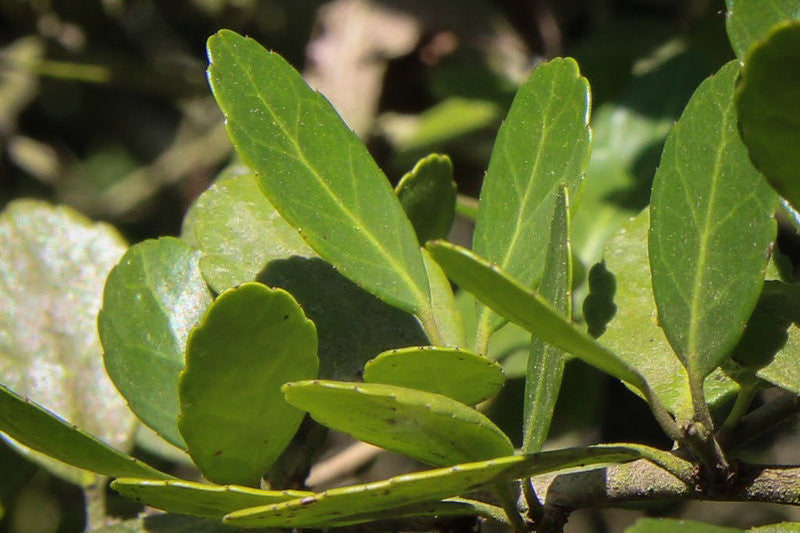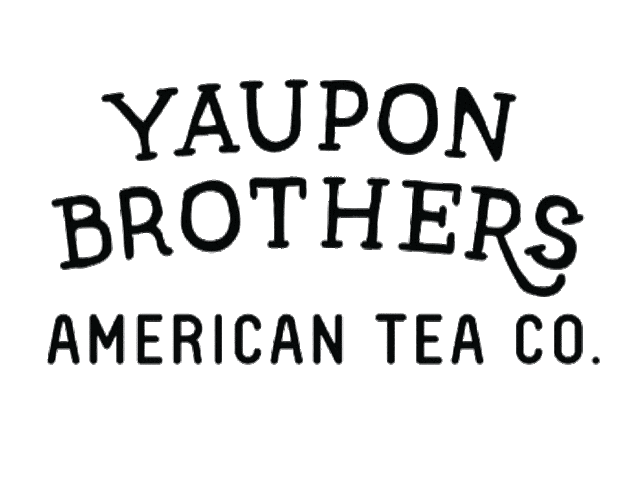
Yaupon, the Only Caffeine Source Native to the U.S., Has Potential to Explode
There is, however, one local contender looking to break onto the scene. Yaupon holly, the only naturally occurring caffeine-containing plant in the United States, has the potential to become the next hyped alternative to coffee. Celebrated for its combination of homegrown appeal, pleasant taste, and possible health benefits, yaupon tea has plenty going for it. But will consumers be put off by its unflattering history?
The “American Yerba Mate”
“If you’re looking at trends in caffeinated beverages, the thing I think that is the most interesting right now, and the one that’s got the potential bullet for market expansion, is yaupon,” says Mark Blumenthal, founder and executive director, American Botanical Council (Austin, TX).
With the popularity of yerba mate and guayusa teas in the United States, it’s no stretch to imagine the success of their close relative, yaupon. A member of the same Ilex genus as its South American cousins, yaupon is native to southeastern states from East Texas to Georgia. The plant’s leaves contain around 1% caffeine, says Blumenthal, similar to the caffeine content of yerba mate. But the taste may be even better.
“It tends to have, especially when it’s roasted, in my opinion, a sweeter or more pleasant taste than mate, which is a positive,” says Blumenthal.
Recent research seems to back up Blumenthal’s opinion. In a study1 of 75 individuals aged 18 and older, participants sampled unidentified tea infusions of yaupon holly and yerba mate, then rated their favorability of the taste. On a scale from 1 to 9, 41% of participants scored yaupon a rating of 4 or higher, compared to only 19% who gave yerba mate the same rating. The researchers suggested the preference might be due to the fact that yaupon is less bitter than mate.
Yaupon tea has been drunk in pockets across the American South for hundreds of years and was used medicinally by Native Americans, says Blumenthal, but modern commercialization of yaupon has only begun in the last few years. However, among the few companies who are marketing yaupon teas, there is definite agreement that the market is quickly growing.
“We put our first product out in 2012, and we have grown exponentially since then,” says Bryon White, president and CEO, Yaupon Asi Tea (New Smyrna Beach, FL). Fellow yaupon purveyors Texas Yaupon Tea (Bastrop County, TX) and Cat Spring Tea (Cat Spring, TX) have also seen a big increase in interest since launching in 2012 and 2013, respectively.
“At the time, it was extremely rare for anyone to have heard of yaupon tea, and now more and more people say they’ve read about or heard about it,” says Maridel Martinez, founder and owner, Texas Yaupon Tea. “Most people around here are familiar with the plant but have no idea it is caffeinated or that you can make a tea from it. They are always pleasantly surprised when they sample it.”
Early research into the potential health benefits of yaupon have also been promising, with an in vitro study2 from Texas A&M University (College Station, TX) suggesting that a yaupon extract may have anti-inflammatory properties and a high concentration of antioxidants.
But if this all-American caffeine source is so great, why is it only being commercialized now?
A History to Reckon With
Which brings us to yaupon’s cultural history and rather unfortunate scientific name, Ilex vomitoria. The plant was named in 1789 by William Aiton, a Scottish botanist, as a reference to its use in a Native American ceremony during which men would drink huge amounts of the yaupon-filled “black drink” in order to induce vomiting and gain energy.3
The purification ritual often preceded wars or marriages, with yaupon holding an important place in the culture of Timucuan Native Americans and later Seminoles, according to Francis Putz, professor of biology and forestry, University of Florida (Gainesville, FL). Indeed, even the name of the famous Seminole leader Osceola is an Anglicized version of “Asi Yahola,” meaning “black drink singer,” says Putz.
Yet in spite of its name, several studies4 have shown no such emetic effect in yaupon leaves. It may have been that the “black drink” contained other ingredients that induced vomiting or it was simply the massive amount the men consumed that made them purge.
There is also another, more sinister theory behind Ilex vomitoria’s name, says Putz. It’s possible that Aiton was bribed by Ceylon tea merchants working in England to give yaupon its unattractive name as a way to shut down competition. Although this early case of corporate espionage lacks proof, Putz believes it to be true.
But regardless of how the name originated, it may well have undermined earlier attempts at commercializing yaupon. In the same study1 where participants rated the taste of yaupon compared to yerba mate, they also completed a survey on how likely they were to purchase a yaupon beverage. While 12 of the 75 participants said they would be interested in purchasing “a caffeine-containing tea made from a shrub native to North America that was consumed by Amerindians and early European colonists,” only 7 continued to hold that belief after learning yaupon’s scientific name and ritualistic history.
For companies like ASI Tea (Savannah, GA), which launched the first ready-to-drink (RTD) yaupon tea a little over six months ago, that history may still be working against them. Lou Thomann, founder, says that yaupon’s legacy is the company’s “biggest challenge.”
“Anyone trying to commercialize this is going to have to deal with that story,” says Thomann, adding that his philosophy is “don’t hide it, celebrate it. It’s an amazing story. If anyone wants to root for the underdog, this thing has been the underdog.”
Building from the Ground Up
Yaupon’s distinctly American heritage is a big part of the appeal, but it can also make things more difficult for suppliers. For one, labor costs are considerably higher in the United States than in developing countries where many other caffeine ingredients originate.
“There is the financial challenge of American labor rates throughout harvesting and processing, in contrast to lower internationally sourced coffee and tea production costs, which means yaupon tea will be a more expensive specialty,” says Abianne Miller Falla, cofounder, Cat Spring Tea. Cat Spring Tea currently wild-picks its yaupon leaves.
Yaupon’s relative newcomer status as a commercial ingredient also means there are no established methods or supply chains to tap into, but Falla says this has given Cat Spring Tea the freedom to experiment with a variety of techniques in improving its treatment of the yaupon leaf.
Although several companies have plans for RTD yaupon teas in the future (and one yaupon moonshine), ASI Tea is the first company to offer a line of RTD yaupon teas, which debuted in late 2014. Other native Southern ingredients, such as muscadine grapes, aronia berries, local wild mints, and wild yaupon honey, are combined with yaupon in the RTD teas, says Thomann, which each contain around 30 mg of caffeine.
“We’re selling a really healthy, native, local, wild-picked American treasure,” says Thomann.
After hundreds of years of obscurity and undeserved stigma, yaupon’s time on the commercial caffeine market may have finally arrived.
Also read:
What Actions Could FDA Possibly Take on Caffeine This Year?
Energy Drinks: Consumers Seek Healthy Ingredients
References
- Wainwright AE et al. “A misleading name reduces marketability of a healthful and stimulating natural product: a comparative taste test of infusions of a native Florida holly (Ilex vomitoria) and yerba mate (I. paraguariensis).” Economic Botany, vol. 68, no. 3 (September 2014): 350-354
- Noratto GD et al. “Flavonol-rich fractions of yaupon holly leaves (Ilex vomitoria, Aquifoliaceae) induce microRNA-146a and have anti-inflammatory and chemopreventive effects in intestinal myofibroblast CCD-18Co cells.” Fitoterapia, vol. 82, no. 4 (June 2011): 557-569
- Putz FD. “Yaupon redeemed.” The Palmetto, vol. 31, no. 3 (2014): 9-11
- Palumbo MJ et al. “Ilex vomitoriaait. (yaupon): a native North American source of a caffeinated and antioxidant rich tea.” Economic Botany, vol. 63, no. 2 (June 2009): 130-137
- See more at: http://www.nutritionaloutlook.com/sports-energy/yaupon-only-caffeine-source-native-us-has-potential-explode#sthash.mqPACTEv.dpuf
There is, however, one local contender looking to break onto the scene. Yaupon holly, the only naturally occurring caffeine-containing plant in the United States, has the potential to become the next hyped alternative to coffee. Celebrated for its combination of homegrown appeal, pleasant taste, and possible health benefits, yaupon tea has plenty going for it. But will consumers be put off by its unflattering history?
The “American Yerba Mate”
“If you’re looking at trends in caffeinated beverages, the thing I think that is the most interesting right now, and the one that’s got the potential bullet for market expansion, is yaupon,” says Mark Blumenthal, founder and executive director, American Botanical Council (Austin, TX).
With the popularity of yerba mate and guayusa teas in the United States, it’s no stretch to imagine the success of their close relative, yaupon. A member of the same Ilex genus as its South American cousins, yaupon is native to southeastern states from East Texas to Georgia. The plant’s leaves contain around 1% caffeine, says Blumenthal, similar to the caffeine content of yerba mate. But the taste may be even better.
“It tends to have, especially when it’s roasted, in my opinion, a sweeter or more pleasant taste than mate, which is a positive,” says Blumenthal.
Recent research seems to back up Blumenthal’s opinion. In a study1 of 75 individuals aged 18 and older, participants sampled unidentified tea infusions of yaupon holly and yerba mate, then rated their favorability of the taste. On a scale from 1 to 9, 41% of participants scored yaupon a rating of 4 or higher, compared to only 19% who gave yerba mate the same rating. The researchers suggested the preference might be due to the fact that yaupon is less bitter than mate.
Yaupon tea has been drunk in pockets across the American South for hundreds of years and was used medicinally by Native Americans, says Blumenthal, but modern commercialization of yaupon has only begun in the last few years. However, among the few companies who are marketing yaupon teas, there is definite agreement that the market is quickly growing.
“We put our first product out in 2012, and we have grown exponentially since then,” says Bryon White, president and CEO, Yaupon Asi Tea (New Smyrna Beach, FL). Fellow yaupon purveyors Texas Yaupon Tea (Bastrop County, TX) and Cat Spring Tea (Cat Spring, TX) have also seen a big increase in interest since launching in 2012 and 2013, respectively.
“At the time, it was extremely rare for anyone to have heard of yaupon tea, and now more and more people say they’ve read about or heard about it,” says Maridel Martinez, founder and owner, Texas Yaupon Tea. “Most people around here are familiar with the plant but have no idea it is caffeinated or that you can make a tea from it. They are always pleasantly surprised when they sample it.”
Early research into the potential health benefits of yaupon have also been promising, with an in vitro study2 from Texas A&M University (College Station, TX) suggesting that a yaupon extract may have anti-inflammatory properties and a high concentration of antioxidants.
But if this all-American caffeine source is so great, why is it only being commercialized now?
A History to Reckon With
Which brings us to yaupon’s cultural history and rather unfortunate scientific name, Ilex vomitoria. The plant was named in 1789 by William Aiton, a Scottish botanist, as a reference to its use in a Native American ceremony during which men would drink huge amounts of the yaupon-filled “black drink” in order to induce vomiting and gain energy.3
The purification ritual often preceded wars or marriages, with yaupon holding an important place in the culture of Timucuan Native Americans and later Seminoles, according to Francis Putz, professor of biology and forestry, University of Florida (Gainesville, FL). Indeed, even the name of the famous Seminole leader Osceola is an Anglicized version of “Asi Yahola,” meaning “black drink singer,” says Putz.
Yet in spite of its name, several studies4 have shown no such emetic effect in yaupon leaves. It may have been that the “black drink” contained other ingredients that induced vomiting or it was simply the massive amount the men consumed that made them purge.
There is also another, more sinister theory behind Ilex vomitoria’s name, says Putz. It’s possible that Aiton was bribed by Ceylon tea merchants working in England to give yaupon its unattractive name as a way to shut down competition. Although this early case of corporate espionage lacks proof, Putz believes it to be true.
But regardless of how the name originated, it may well have undermined earlier attempts at commercializing yaupon. In the same study1 where participants rated the taste of yaupon compared to yerba mate, they also completed a survey on how likely they were to purchase a yaupon beverage. While 12 of the 75 participants said they would be interested in purchasing “a caffeine-containing tea made from a shrub native to North America that was consumed by Amerindians and early European colonists,” only 7 continued to hold that belief after learning yaupon’s scientific name and ritualistic history.
For companies like ASI Tea (Savannah, GA), which launched the first ready-to-drink (RTD) yaupon tea a little over six months ago, that history may still be working against them. Lou Thomann, founder, says that yaupon’s legacy is the company’s “biggest challenge.”
“Anyone trying to commercialize this is going to have to deal with that story,” says Thomann, adding that his philosophy is “don’t hide it, celebrate it. It’s an amazing story. If anyone wants to root for the underdog, this thing has been the underdog.”
Building from the Ground Up
Yaupon’s distinctly American heritage is a big part of the appeal, but it can also make things more difficult for suppliers. For one, labor costs are considerably higher in the United States than in developing countries where many other caffeine ingredients originate.
“There is the financial challenge of American labor rates throughout harvesting and processing, in contrast to lower internationally sourced coffee and tea production costs, which means yaupon tea will be a more expensive specialty,” says Abianne Miller Falla, cofounder, Cat Spring Tea. Cat Spring Tea currently wild-picks its yaupon leaves.
Yaupon’s relative newcomer status as a commercial ingredient also means there are no established methods or supply chains to tap into, but Falla says this has given Cat Spring Tea the freedom to experiment with a variety of techniques in improving its treatment of the yaupon leaf.
Although several companies have plans for RTD yaupon teas in the future (and one yaupon moonshine), ASI Tea is the first company to offer a line of RTD yaupon teas, which debuted in late 2014. Other native Southern ingredients, such as muscadine grapes, aronia berries, local wild mints, and wild yaupon honey, are combined with yaupon in the RTD teas, says Thomann, which each contain around 30 mg of caffeine.
“We’re selling a really healthy, native, local, wild-picked American treasure,” says Thomann.
After hundreds of years of obscurity and undeserved stigma, yaupon’s time on the commercial caffeine market may have finally arrived.
Also read:
What Actions Could FDA Possibly Take on Caffeine This Year?
Energy Drinks: Consumers Seek Healthy Ingredients
References
- Wainwright AE et al. “A misleading name reduces marketability of a healthful and stimulating natural product: a comparative taste test of infusions of a native Florida holly (Ilex vomitoria) and yerba mate (I. paraguariensis).” Economic Botany, vol. 68, no. 3 (September 2014): 350-354
- Noratto GD et al. “Flavonol-rich fractions of yaupon holly leaves (Ilex vomitoria, Aquifoliaceae) induce microRNA-146a and have anti-inflammatory and chemopreventive effects in intestinal myofibroblast CCD-18Co cells.” Fitoterapia, vol. 82, no. 4 (June 2011): 557-569
- Putz FD. “Yaupon redeemed.” The Palmetto, vol. 31, no. 3 (2014): 9-11
- Palumbo MJ et al. “Ilex vomitoriaait. (yaupon): a native North American source of a caffeinated and antioxidant rich tea.” Economic Botany, vol. 63, no. 2 (June 2009): 130-137


